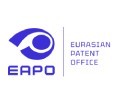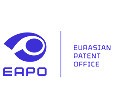Kazakhstan to Implement New Goods Marking Rules and National Catalog in January 2026
Over the past five years, Kazakhstan has been steadily building its system of mandatory labeling and traceability, first by introducing labeling requirements for high-risk goods such as footwear, tobacco, and pharmaceuticals in 2020 and 2021 to combat counterfeiting, improve tax compliance, and protect consumers. However, until recently, the legal framework lacked a centralised registry to unify and streamline product data.
Following Order No. 232-HK of 31 July 2025, issued by Kazakhstan’s Ministry of Trade and Integration, the National Goods Catalog (NGC) was officially launched on 15 August 2025. The NGC is a centralised digital platform that stores standardised product data in both Kazakh and Russian, including product names, importer or manufacturer details, global and national trade item number codes (GTIN/NTIN), and technical characteristics, which ensures that no goods enter circulation without prior registration.
The legal basis for this initiative is the Law of the Republic of Kazakhstan No. 215-VIII ZRK “On Amendments and Additions to Certain Legislative Acts on Taxation Issues”, published on 19 July 2025, which revises the Tax Code and related legislation to integrate tax control, trade monitoring, and labeling requirements into a unified regulatory framework. It also introduces liability for incomplete or inaccurate registration in the NGC, signaling that the system is mandatory and enforceable. A separate law, expected to be adopted soon, will formally regulate the National Goods Catalog (NGC), requiring all products to be registered and labeled accordingly.
From January 2026, businesses must fully comply with digital registration and labeling, or risk penalties and market exclusion. The NGC is expected to curb counterfeit goods and tax evasion, enhance customer protection, and align Kazakhstan’s trade system with international standards. While companies may incur administrative costs to adapt to changes, the NGC is expected to streamline product turnover, improve market predictability, and curb shadow trade.
Key functions of the NGC:
- Provides a unified reference source for all goods subject to labeling and traceability;
- Ensures consistent classification and prevents duplication or manipulation of product data;
- Serves as a tool for tax authorities and regulators to monitor turnover and fight the shadow economy;
- Increases transparency for consumers, guaranteeing access to accurate product information.
Procedures for Businesses:
- Product Card Creation: Manufacturers or importers submit product data electronically, including names, GTIN/NTIN codes, and technical specifications, to the Department of Digital Transformation and Marking of Goods under Kazakhstan’s Ministry of Trade and Integration. The applications are reviewed within two working days.
- Decision: Within one working day, the authority registers the product or issues a refusal, which can be appealed under the Administrative Procedural Code.
- Labeling Codes: After the product is registered in the National Goods Catalog, the business must apply for unique labeling codes from the authorised operator, which are then used to mark each item before it enters circulation.
- Traceability: The movement of goods is tracked in the information system from registration to final sale, ensuring transparency and accountability throughout the supply chain.











